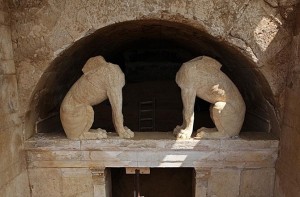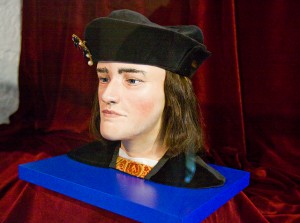Archaeologists are constantly uncovering new and exciting historical discoveries to share with the rest of the world. What have they provided for 2015 so far? History Learning makes it our mission to find out…
1. Greek Mystery Tomb
At the beginning of 2015 there was a reported skeleton found buried under a huge mound at Amphipolis in northern Greece.
Dating back to the reign of Alexander the Great (late fourth century B.C.), the tomb measures approximately a third of a mile in circumference and is the largest ever found one in Greece.
The human remains were uncovered at the end of an archaeological exploration through sphinxes, female statues and dazzling mosaics, which would prove fierce competition even for the Ancient Romans or Egyptians.
A new geophysical scan has identified four areas of “especially high electrical resistance” underneath the vast tomb, indicating that more structures could await. Excavation is due to begin in the summer and any new discoveries may increase the number of existing historical sights.
2. Amelia Earhart’s Plane
The mystery surrounding Amelia Earhart and her plane’s disappearance over the central Pacific Ocean on 2 July 1937 still baffles the world today. She had her first proper flying encounter at an exhibition put on by a World War One ace.
On 28 October 2014 Ric Gillespie, executive director at The International Group for Historic Aircraft Recovery (TIGHAR), made the announcement that his team on Nikumaroro had found a piece of aircraft debris. This discovery paves the way for physical evidence of retrieving Earhart’s apparently lost plane, seeing as Nikumaroro is an uninhabited chain of coral islands in the southwestern Pacific republic of Kiribati.
The finding could indicate that unlike previous assumptions, Earhart and her navigator Fred Noonan did not in fact crash into the Pacific Ocean after running out of fuel, but instead were forced to land on the coral reef of Nikumaroro and became castaways.
Gillespie will try to solve the untold mystery of Amelia and her plane this summer, when he sets out on an expedition to confirm whether or not a sonar anomaly captured off Nikumaroro in 2012 is part of the long lost Electra aircraft.
3. Richard III’s Final Resting Place
Another significant testament has recently been added to the Richard III project ever since his skeleton was found in a Leicester car park in 2012.
The king reigned over England from 1483 until 1485, just after the Medieval period of English history. He died at the Battle of Bosworth.
Mitochondrial DNA has shown a match between Richard and two of his living relatives – proving the bones are those of the former king and giving insight into his diet and disease and the skull injuries which caused his death.
Earlier this year on 26 March, Richard III’s remains were honoured with an official king’s burial in Leicester Cathedral after a seven-day period of events in his name.



